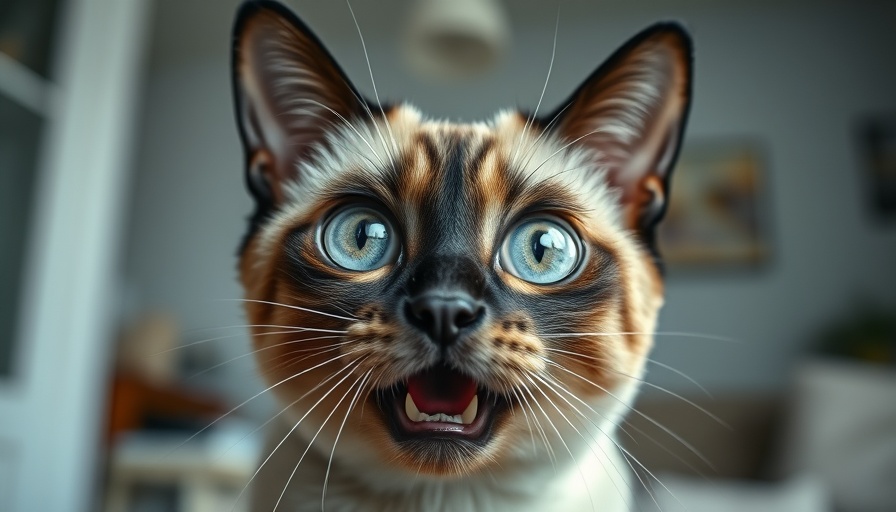
Meet Merv: The Cat Who Talks and Captivates Hearts
Bringing joy and laughter, Merv the talking cat is not just a pet; she's a global sensation. With over 2.4 million followers on TikTok and 1.3 million on Instagram, Merv has become the embodiment of feline charisma, embodying what it means to have a bond with our furry friends. As veterinarians, trainers, and advocates in the pet care industry, understanding Merv’s impact can offer valuable lessons on enriching the lives of pets and their owners alike.
The Origins of a Star
Merv's story begins in 2017 when Chanel, a makeup artist, discovered the tiny kitten in Los Angeles. Initially vulnerable and battling against the odds, Merv’s survival was a testament to the care she received. For animal caregivers and rescue organizations, Merv's story echoes a thrilling reminder of the potential transformation a little love and support can bring to a helpless creature.
Why Merv Resonates With Pet Lovers
What makes Merv unique isn’t just her talent for speaking; it's her ability to connect emotionally. Merv’s iconic utterance of “BAGAGWA” has raised questions and sparked curiosity among her growing audience. This connection resonates particularly well with pet parents, trainers, and mental health advocates, illustrating how animals can promote happiness and relieve stress. Veterinarians also recognize the mental health benefits of engaging with pets, aligning with Merv’s mission to spread joy.
Lessons for Veterinarians and Pet Professionals
For veterinarians and pet professionals, there’s an important insight in Merv's popularity. It highlights the necessity of creating playful environments where pet personalities can shine. For trainers and groomers, Merv serves as a reminder that fostering expression and individual quirks in pets can resonate deeply with their humans, fostering stronger relationships.
The Impact of Social Media on Pet Adoption
In an era where social media shapes perceptions, Merv’s online success opens up conversations on responsible pet ownership and adoption ethics. As pet rescue organizations engage with technology, they can leverage stories like Merv’s to inspire potential adopters to make life-changing decisions. Messaging around animal welfare can be seamlessly integrated into social platforms, effectively reaching and educating a broader audience about adoption.
Fun and Practical Tips from Merv’s Journey
Inspired by Merv’s antics, let's explore actionable insights for supporters of pet welfare:
- Engagement Activities: Create environments that stimulate your pets’ natural instincts.
- Community Events: Collaborate with local charities to host pet-themed events, promoting adoption and responsible pet practices.
- Social Media Savvy: Use platforms to share cute stories and educate others on the importance of caring for animals.
Explore the Fascinating World of Talking Pets
Talking cats and dogs, like Merv, encourage us to view our pets in a unique light. Whether you're in veterinary care, pet nutrition, or just a pet parent, seeing animals as individuals with personalities can enhance our relationships. Understanding Merv's influence may even inspire innovative products from pet accessory developers aimed at enriching pets' lives.
Let Merv Inspire Action
As professionals in the pet industry or dedicated pet parents, it's essential to embrace the joy and connection animals bring. Merv's story encourages proactive engagement with pets, promoting emotional bonds that can lead to healthier and happier lives. Foster these connections by investing in your pet's well-being through proper nutrition, training, and lots of love. Don’t let this opportunity pass—let Merv inspire you to elevate your approach to pet care!
 Add Row
Add Row  Add
Add 




Write A Comment